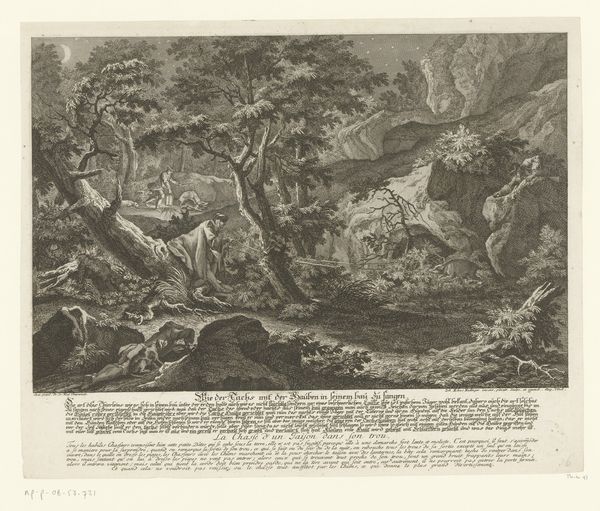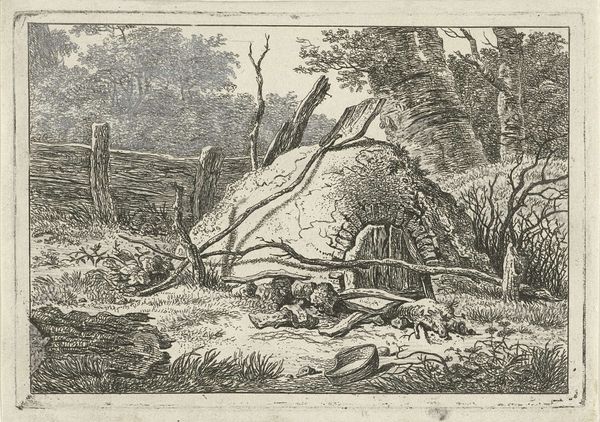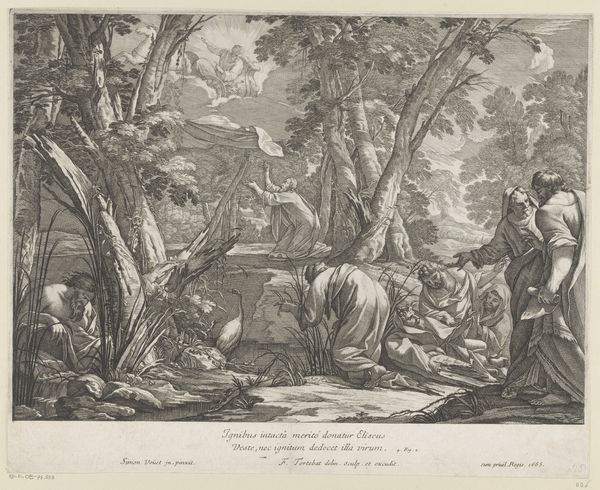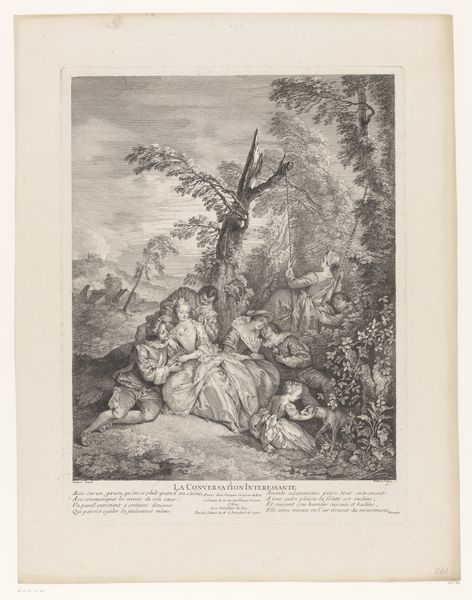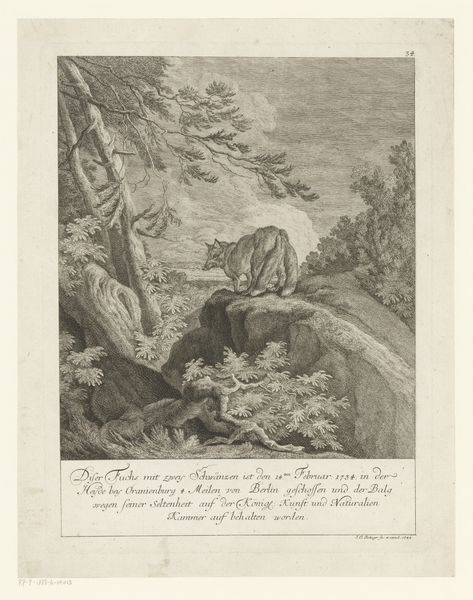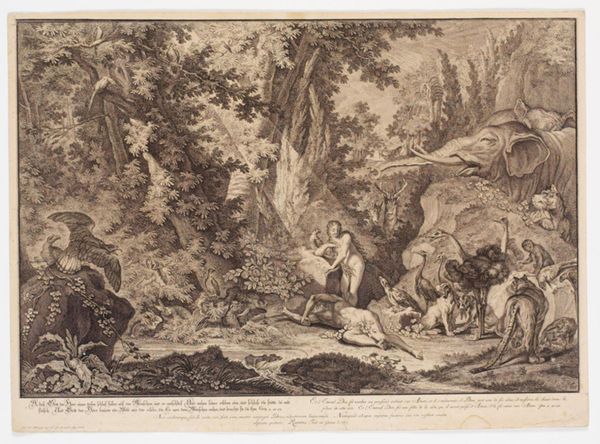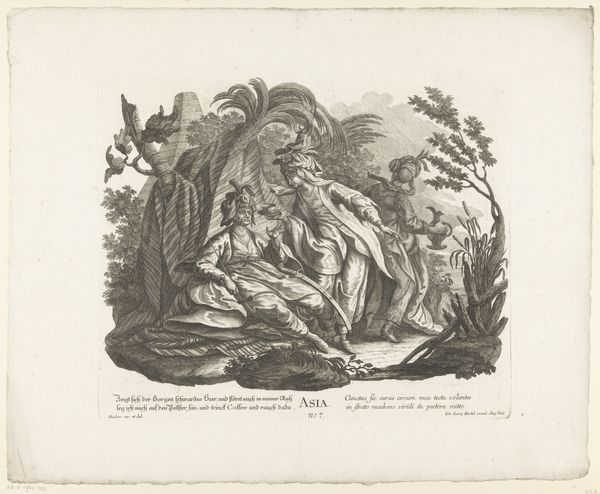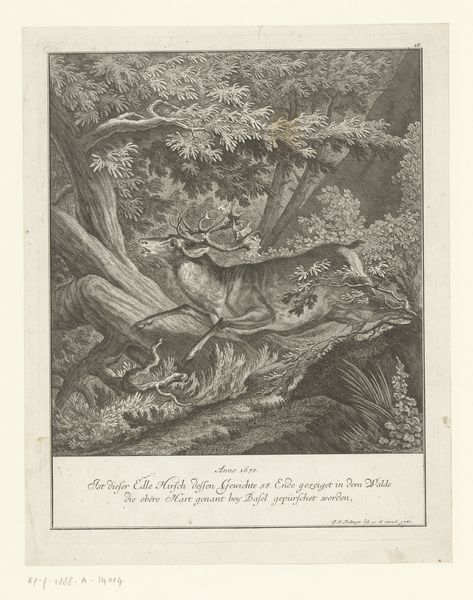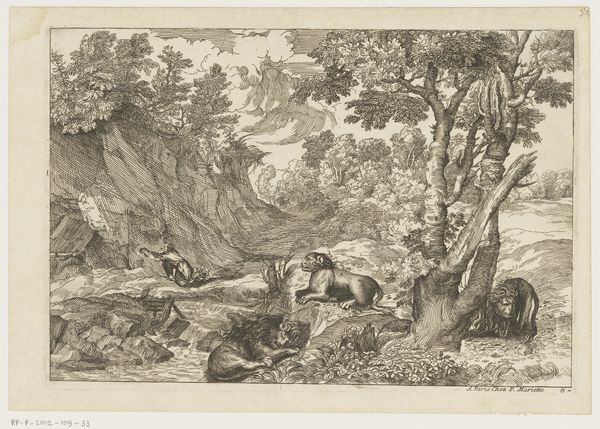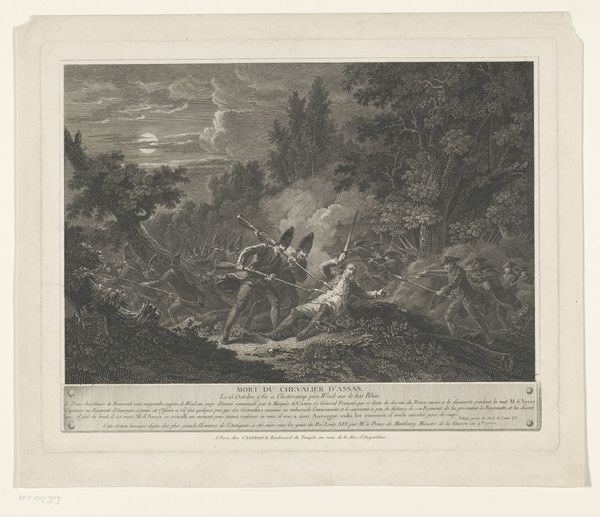
Jagers schieten op wolven die worden gelokt door een dood beest 1729
0:00
0:00
print, engraving
#
baroque
# print
#
landscape
#
history-painting
#
engraving
Dimensions: height 340 mm, width 423 mm
Copyright: Rijks Museum: Open Domain
Curator: Here we have Johann Elias Ridinger's 1729 engraving, "Jagers schieten op wolven die worden gelokt door een dood beest," or "Hunters Shooting Wolves Lured by a Dead Animal," a Baroque landscape housed in the Rijksmuseum. Editor: Whoa, okay, first impression: it feels stark. Like a winter's tale gone wrong. So much texture from the engraving makes the forest feel dense, ominous almost. And those wolves...they're caught in such a tragic, predatory trap. Curator: Indeed. The piece encapsulates a moment steeped in human versus nature tensions. The hunting of wolves during this period was deeply linked to anxieties about wilderness and control. Ridinger, known for his detailed animal studies, subtly explores this relationship. We can view the "hunters" not merely as protagonists, but also as agents of environmental and ecological transformation, as their actions represent the dominant socio-political order affecting species diversity and natural landscapes. Editor: Exactly. You feel the violation—that calculated deception. But beyond the ecological statement, I see this raw portrayal of survival. Those hunters blend into the rocks, they're almost camouflaged. Do you think Ridinger wanted us to think about humans as another type of predator in this world, one with guns? Curator: Precisely! This prompts us to consider humanity’s role within the larger ecological web. By showcasing the hunters amidst the very landscape the wolves inhabit, Ridinger suggests an intersectional power dynamic – of man within the "wild", disrupting its supposed natural order. It asks us to question, who really is wild? How do socio-cultural forces drive the ongoing environmental destruction? Editor: Wow, "who is really wild?" That phrasing shifts the entire conversation, makes the art even more engaging. To me, it’s not just about that single hunting scene, but more about the continuing, larger, societal impacts of environmental damage. Curator: Agreed, the engraving pushes us to contextualize our ecological present by illustrating the historic power dynamics between mankind, culture, and environment—a theme still profoundly relevant today. Editor: Thinking about this piece... it’s pretty humbling and haunting. It makes you wonder what our impact on our planet really looks like and how future humans may describe it when looking at our actions.
Comments
No comments
Be the first to comment and join the conversation on the ultimate creative platform.
